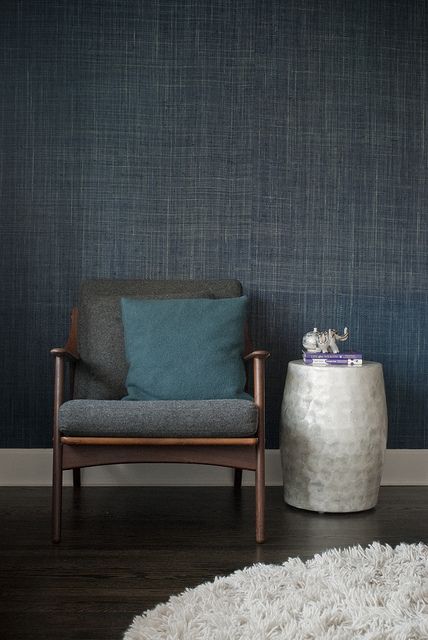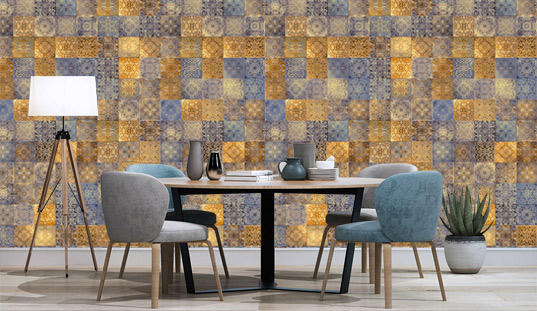Wallpaper
Wallpaper is a design element that can be used to separate spaces and create style. The nature of wallpaper is its “pattern”. Depending on whether the pattern is precise, calm, or rhythmic, the character and expression of the wallpaper will change accordingly. For example, fully engineered patterns have a stabilizing effect. The motifs in the room are challenging and lively. In contrast, unsystematic structures randomly scatter and create a natural atmosphere.
Due to the easy and fast installation of wallpaper and a more reasonable price than other wall coverings, wallpaper is a suitable and reasonable choice to change the decoration of your home or workplace and creates diversity and a sense of freshness to the environment.
– It is better to pay attention to the material of the wallpaper when buying it and choose a waterproof and washable material that has a vinyl coating. This type of wallpaper has a thin and transparent plastic coating that is applied to it during construction. This layer makes it resistant to water and stains. The main problem with this type of paper is that it is relatively difficult to remove due to the plastic coating that prevents water from penetrating and the underlying adhesive to soften.
– It is better to use anti-allergic wallpaper that does not absorb odors and dust so that it does not lose its transparency and appearance over time.
– For spaces with short walls, vertical and striped designs make the wall taller and the ceiling higher.
Wallpaper with broken lines or sharp geometric patterns, gives the environment, energy, excitement, and dynamism.
– Soft colors and small and faint designs calm the environment.









